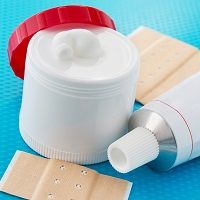Phase 1 Trial of Cannabis Ointment Demonstrates Safety
The ointment, which contains 3% CBD and 3% THC, will be tested for the treatment of psoriasis in an upcoming phase 2 trial.

Topline phase 1 results from a study of a medical grade cannabis (MGC) ointment show that the topical treatment was safe and tolerable. No severe adverse events occurred in either of 2 stages of the study, and only one participant experienced minor irritation.
"We are encouraged by the positive results from this phase 1 safety trials,” said Mordechai Bignitz, Chief Executive Officer of OWC Pharmaceutical Research Corp., in a statement. “This was the first trial to assess the safety and tolerability of medical grade cannabis ointment as a topical treatment for skin diseases.”
The single-center, prospective, and placebo-controlled study consisted of 2 stages. In the first, 26 healthy participants received a single dose application of medical grade cannabis ointment (3% cannabidiol [CBD], 3% tetrahydrocannabinol [THC]). They were hospitalized and monitored for 24 hours.
The second stage assessed the safety and tolerability of multiple doses of MGC applied over 6 weeks. This stage included 20 healthy participants—13 that had previously participated in stage 1 and 7 that had not. Each participant applied the cannabis ointment (daily dose 30 mg CBD, 30 mg THC) to one arm and a placebo ointment (vehicle only) to the other arm. Participants applied the treatments twice per day, at home. Investigators were blinded as to which treatment was applied to which arm.
The study was conducted at Sheba Academic Medical Center in Israel from September 2017 to January 2019.
OWC Pharmaceutical Research Corp. reported that a phase 2 study of medical grade cannabis ointment for the treatment of psoriasis will begin in the third quarter of 2019.